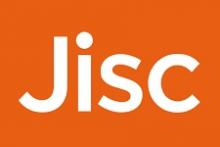Jisc report puts focus on UK research infrastructure assets

Optimising the UK’s university research infrastructure assets report brings together a range of perspectives, says Victoria Moody
The UK’s university research infrastructure assets include research equipment, facilities, and laboratories across all disciplines. These assets underpin the pipeline to innovation that attracts investment and develops skills in the UK, supporting economies, places, and communities. But their potential remains untapped as a collective strategic asset that supports sustainability and impact goals.
Challenging times for research
The UK’s research and innovation sector faces a series of unprecedented challenges.
Political and economic uncertainty is increasing costs, putting pressure on national and international research teams and highlighting research security issues. Energy costs also impact research as much as other supply lines such as manufacturing and logistics.
To ensure the long-term success of research and development in the UK, prioritising several issues is important. The sector needs to address environmental concerns, promote training in the skills needed to adapt to and benefit from automation and AI, and reduce bureaucracy.
There is a real need to respond to these challenges and focus on untapped opportunities for collective approaches in more parts of the research system.
We want to review how we manage and share assets, promote training and positive research culture, and improve the sustainability of the UK’s university research infrastructure assets.
Jisc has convened a stakeholder group to offer perspectives on these challenges and opportunities and guide the sector’s next steps through a focused report.
We realised that changing the perception of the UK’s university research infrastructure assets was vital to the sector’s future success. There is a need and opportunity to view them as a collective asset to address some of the challenges we identified.
Viewed this way, these assets could be supported with shared approaches to cost efficiency and management, access and sharing, data and technology. This would underpin their vital role in collaborative research and innovation, across the UK and internationally.
Research projects funded by UK Research and Innovation (UKRI) must contribute to the Equipment Data asset register managed by Jisc. We can use this data to identify the optimum portfolio of tools and services for addressing these challenges. We can then capitalise on the opportunities offered by the UK’s university research infrastructure assets for the medium to longer term.
Bringing the team together
Our stakeholder group comprises 19 different organisations, all of which play a vital role in the research sector in the UK:
- AUDE
- Eastern Arc Academic Research Consortium
- Engineering and Physical Sciences Research Council (EPSRC)
- Heriot-Watt University
- Jisc
- Medical Research Council (MRC)
- Midlands Innovation
- National Centre for Universities and Business (NCUB)
- N8 Research Partnership
- Research England
- Science & Engineering South (SES)
- The GW4 Alliance (GW4)
- School of Advanced Study, University of London
- UK Research and Innovation (UKRI)
- University of Southampton
- University of Strathclyde
- Wales Innovation Network (WIN)
- Yorkshire Universities
This wide range of perspectives meant we could bring together a collective focus on the potential of the asset landscape for the first time.
UKRI’s Digital Research Infrastructure Committee funded the analysis, which enabled us to identify opportunities for collaboration and cost savings and create focused long-term plans.
Report scope
The first task for the stakeholder group was understanding their diverse perspectives and experiences and their varied needs, approaches, challenges and opportunities.
We discovered game-changing innovations as well as barriers to effectively managing these assets. The research also revealed there were obstacles to sharing assets easily and using them sustainably.
The fast pace of technological change is a concern for the sector. New technologies, approaches and opportunities add new challenges to an already complex infrastructure landscape.
These challenges have contributed to a growing desire to work more collaboratively. We found a real appetite to develop more resources for sharing what works and changing what does not.
What the sector needs now
To identify realistic new approaches, we asked research teams and sector leaders:
- What they needed
- What the barriers were to their success
- What they felt should be prioritised to maximise the return on investment of the UK’s research infrastructure
They wanted fewer barriers to sharing ideas, equipment and best practice.
They also wanted a greater focus on equality and diversity in research teams. The diversity of research teams is not often considered when decisions are made about investment in infrastructure assets.
Also highlighted as important innovations were sustainable asset registers, end-to-end workflows and training to make the most of technologies such as automation and AI.
Good practice established by Midlands Innovation demonstrated that connected approaches to supporting research technology professionals could make a big impact.
The results highlighted that a lack of forums or platforms to share best practice was a barrier to progress. We found research teams wanted more guidance on costing and the process of charging as well as how to simply manage the administrative process of sharing.
They were concerned about environmental sustainability, especially refurbishment, decommissioning and recycling.
We documented these challenges and opportunities and began drawing together examples of innovation and excellence from each of the stakeholders who contributed to this report, to shape the next steps as a group.
Exploiting opportunities
The research identified opportunities across four key themes:
1. Strategy and policy: we identified the opportunity to work together to reduce bureaucracy, take a collective view on environmental sustainability, open more laboratory space to other sectors and plan for investment in assets across the UK.
2. People and culture: there is a need to increase diversity and equity across teams, to support the career progression of all research professionals and create a sustainable and diverse research workforce in these highly specialised careers.
3. Funding, costing, and charging: the sector can develop new costing, charging and sharing models that establish more accessible collaborative approaches to the use of assets by more groups.
4. Digital, data and technology: stable and high-quality data, combined with innovative technology, opens new possibilities for efficiency and innovation. This includes using artificial intelligence, more remote labs to extend access and using persistent identifiers that can make tracking contributions to research easier.
Next steps
We have already begun developing this report’s findings into tangible benefits for the sector.
Next, the group will focus on reviewing the costs and benefits of the opportunities we’ve found. We will then create recommendations for the next steps.
We’re developing new approaches with our higher education partners and colleagues in the public and commercial sectors. These will offer a more coherent approach across research and innovation infrastructure.
To read a summary of the report, visit the Optimising the UK’s university research infrastructure assets page of the Jisc website.








